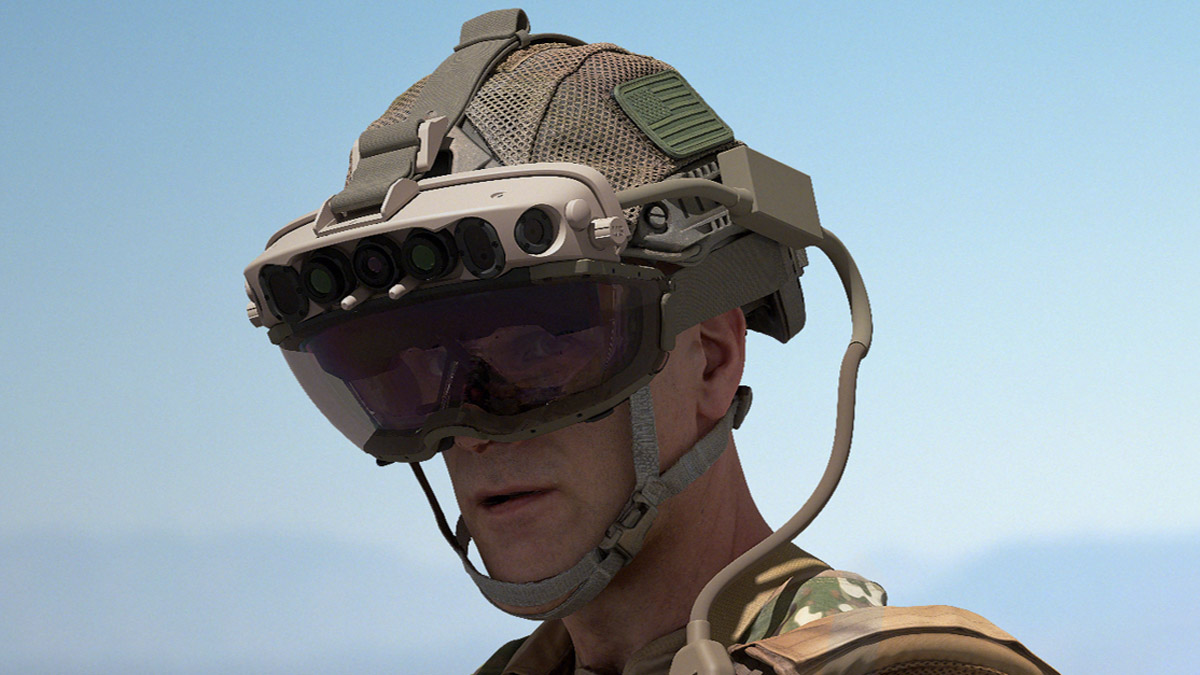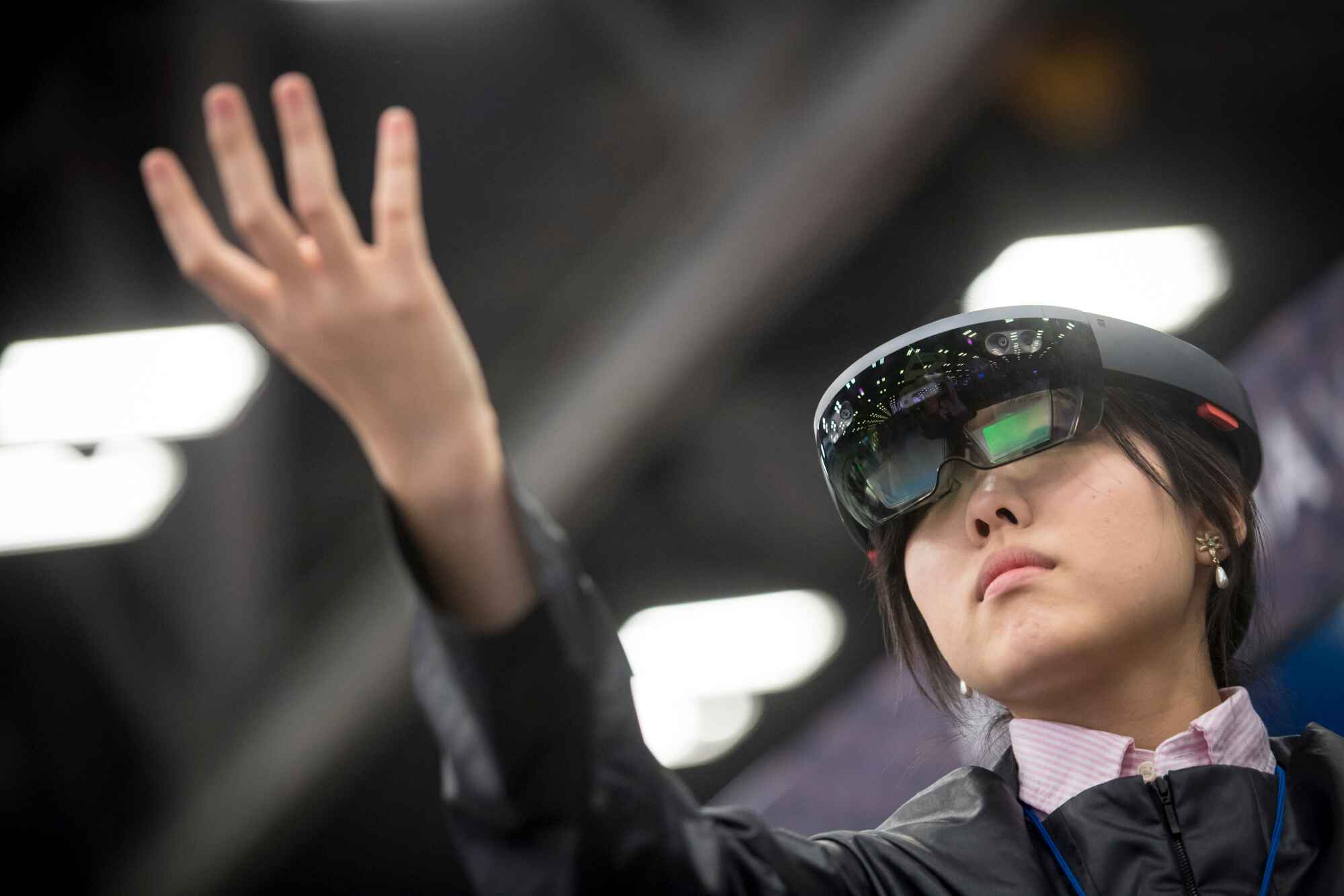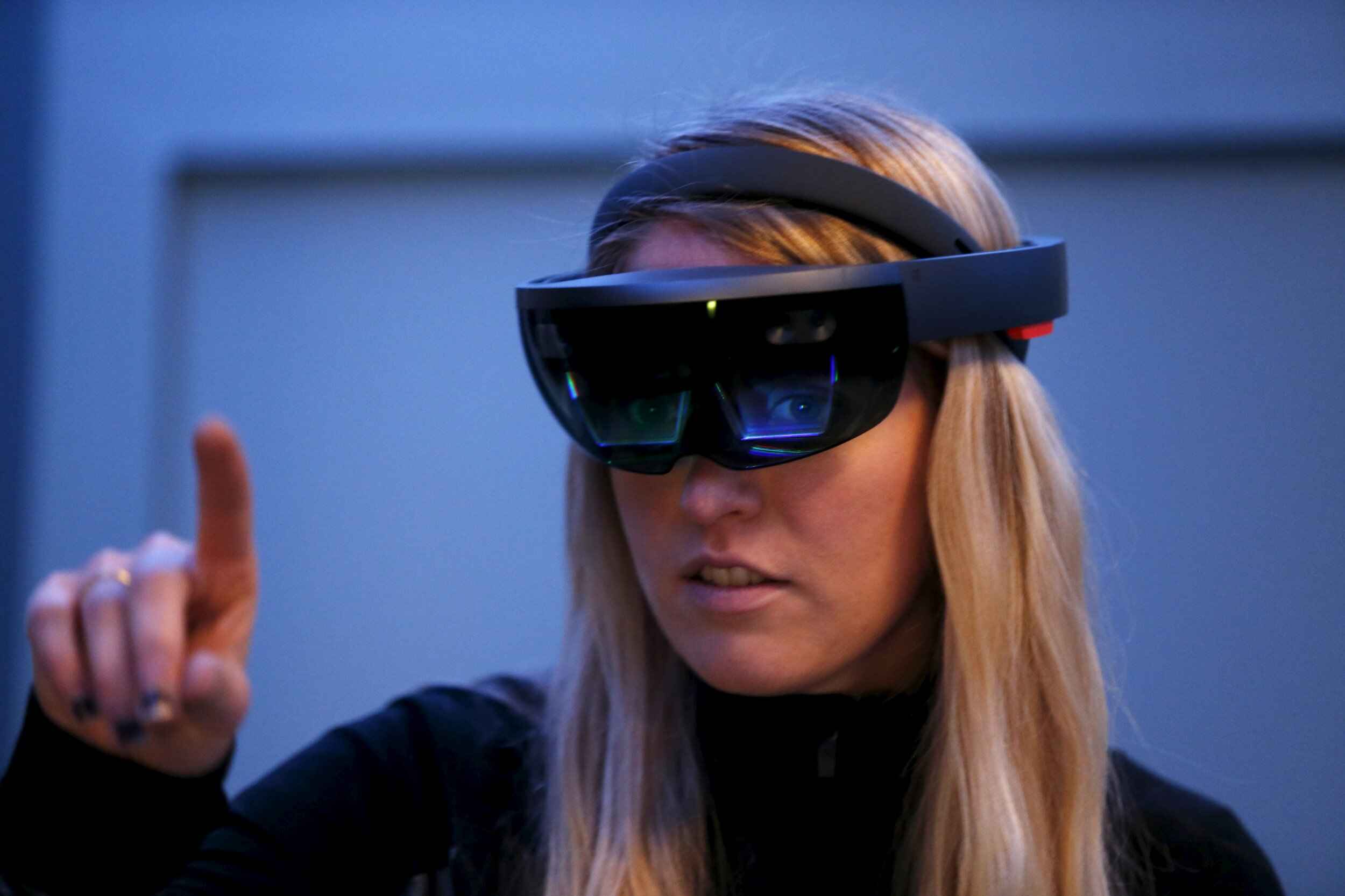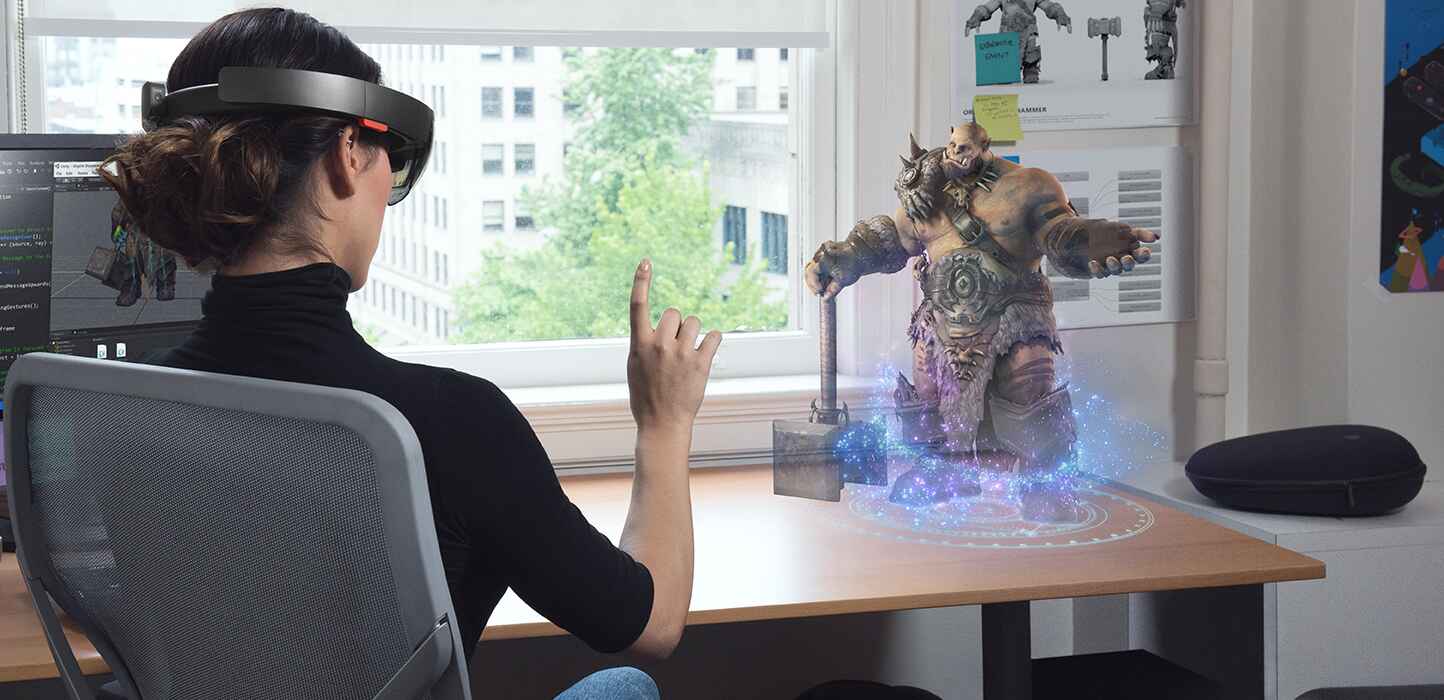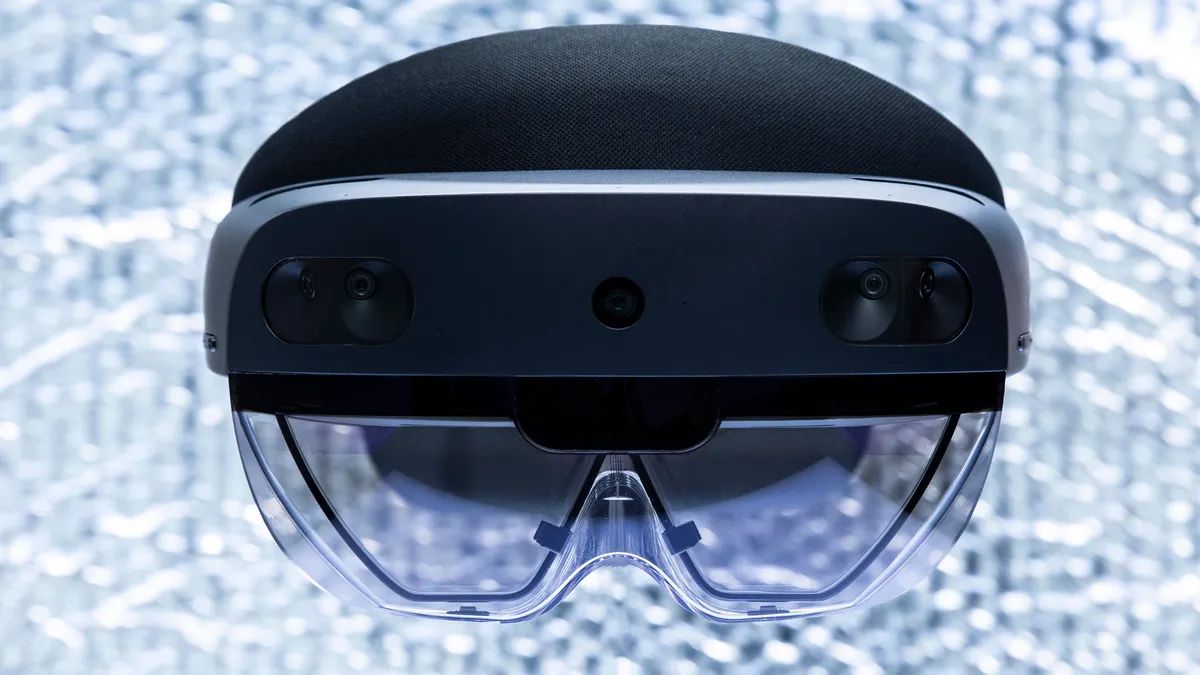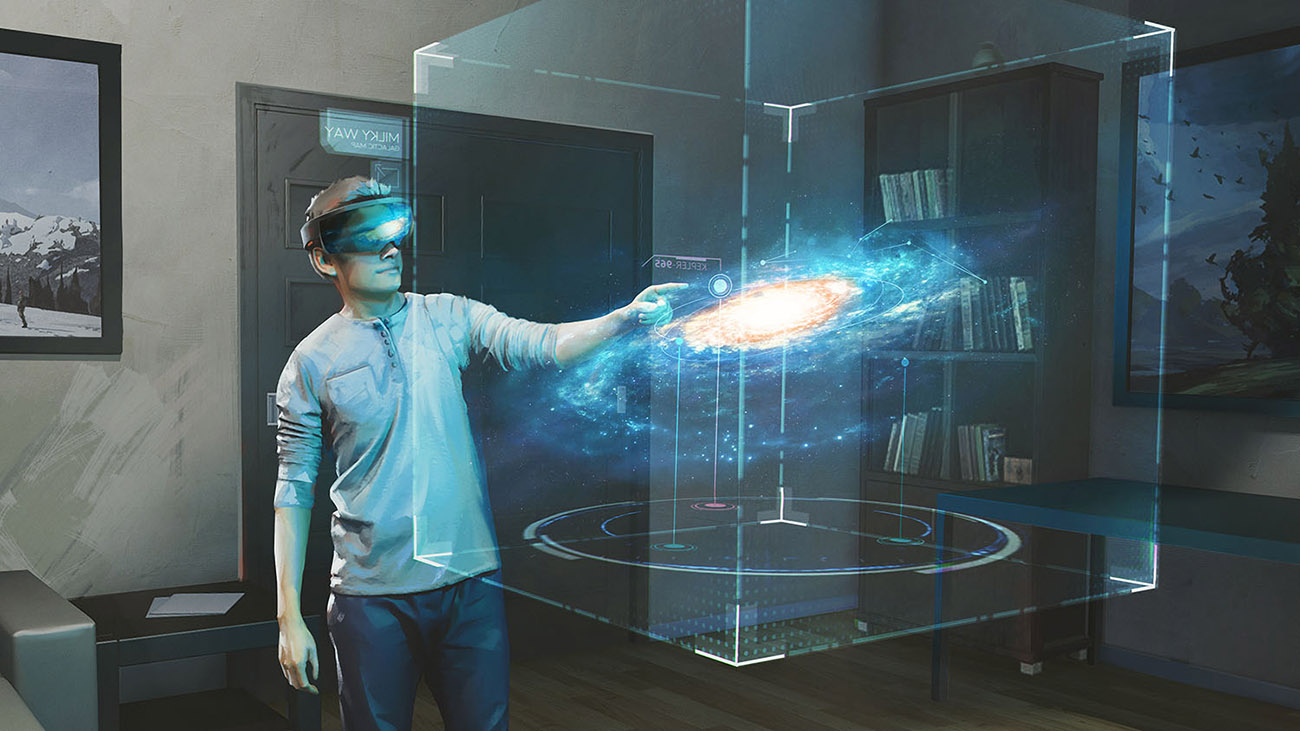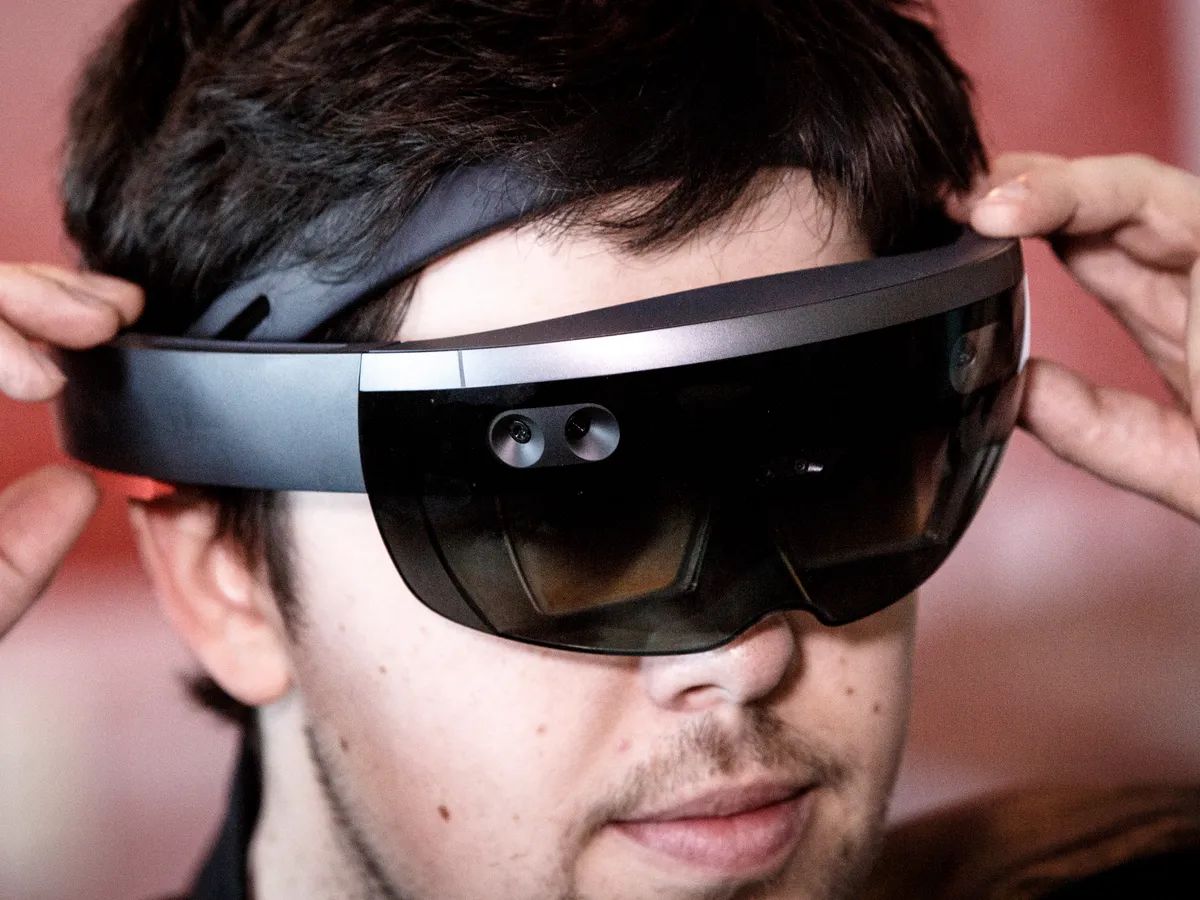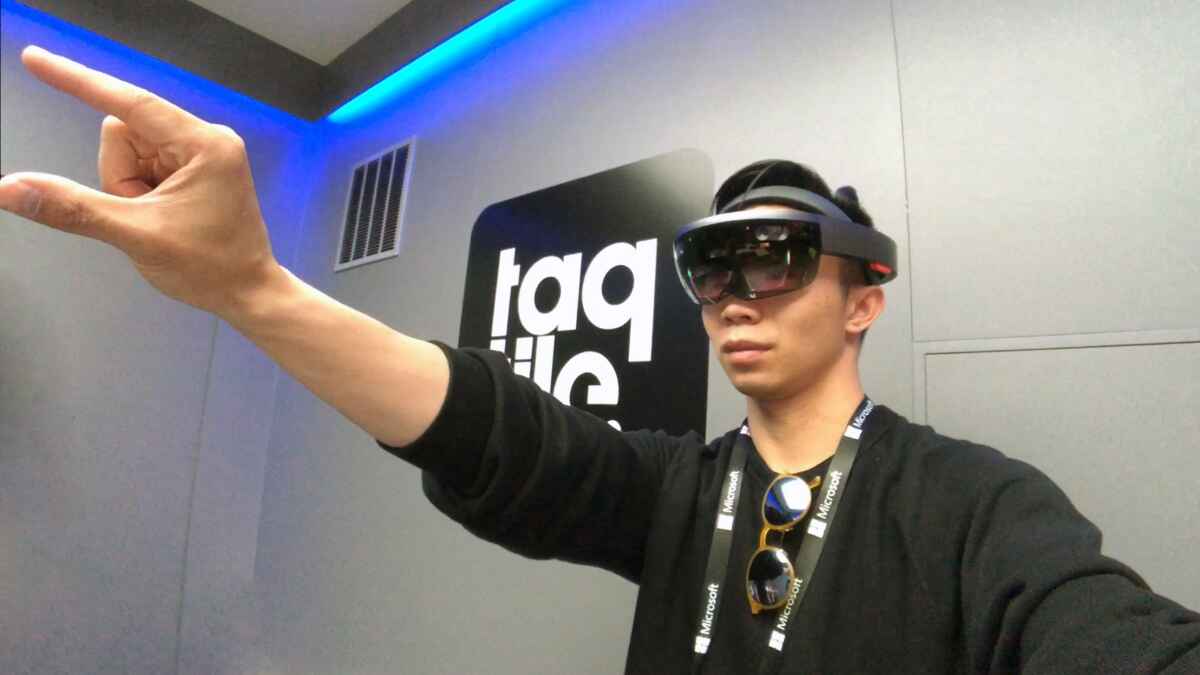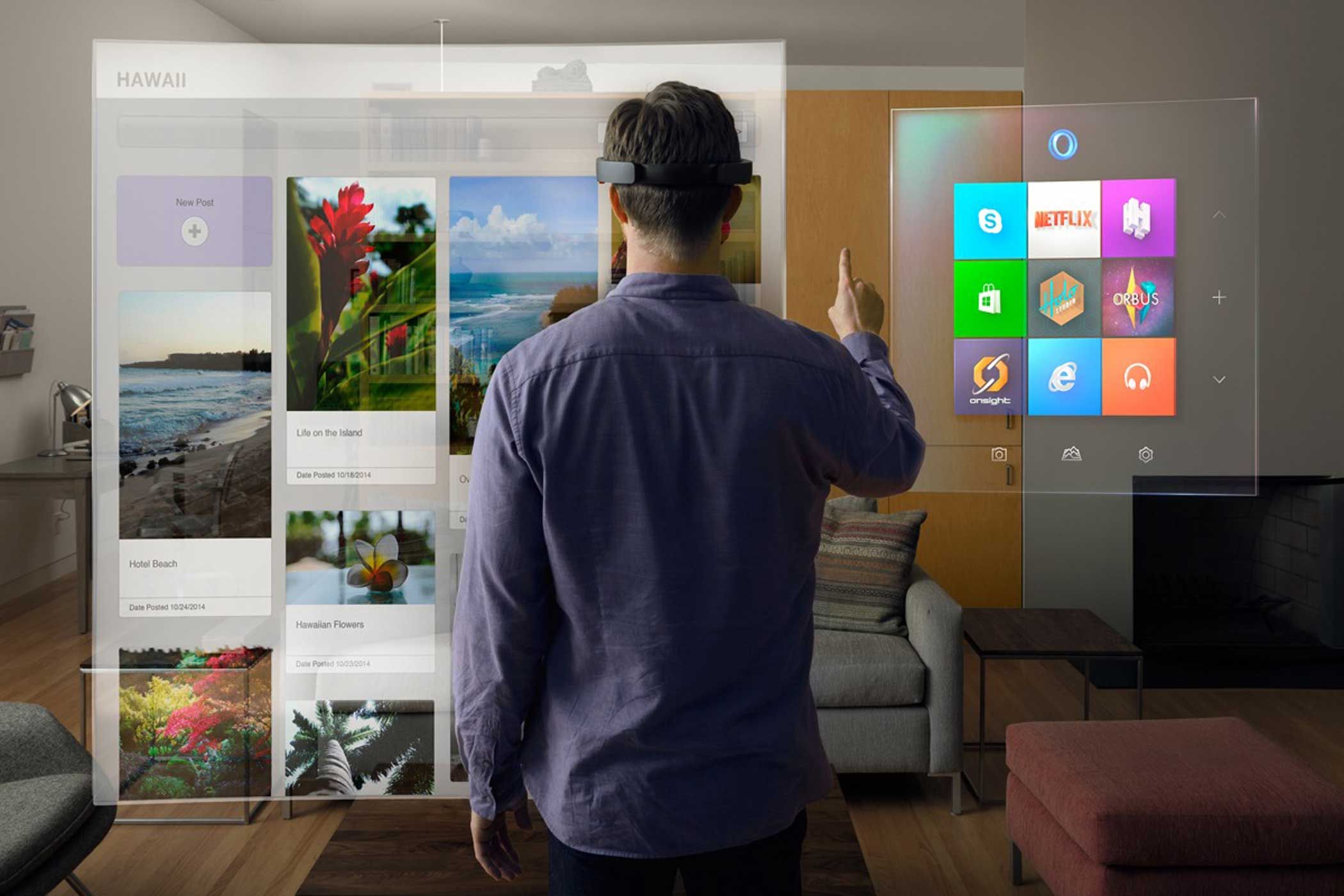Introduction
The integration of technology in military operations has revolutionized the way armed forces carry out their missions. One such innovation that has gained popularity is Microsoft HoloLens.
Microsoft HoloLens is a mixed reality headset developed by Microsoft Corporation. It combines virtual reality (VR) and augmented reality (AR) technologies to overlay digital holograms onto the user’s real-world environment. This cutting-edge device has found its way into many industries, including the military.
The U.S. Army, in particular, has embraced the use of Microsoft HoloLens on the battlefield. By leveraging the capabilities of HoloLens, soldiers are equipped with enhanced situational awareness, target acquisition and identification assistance, navigation support, virtual training and simulation, as well as medical assistance and support.
In this article, we will explore how the U.S. Army utilizes Microsoft HoloLens in their operations, the benefits it brings to the soldiers on the battlefield, and the various applications it offers.
What is Microsoft HoloLens?
Microsoft HoloLens is a state-of-the-art mixed reality (MR) headset that enables users to interact with and perceive both the digital and physical world simultaneously. Unlike virtual reality (VR) headsets that immerse users in a completely virtual environment, HoloLens overlays digital holograms onto the real world, enhancing the user’s perception and interaction with their surroundings.
The device is equipped with advanced sensors, cameras, speakers, and a high-resolution display, all of which contribute to its immersive and interactive capabilities. It employs a combination of technologies, including a transparent display, spatial sound, and advanced image recognition, to seamlessly blend virtual content with the user’s physical environment.
One of the remarkable features of HoloLens is its ability to track the user’s movements and adjust holograms accordingly, delivering a realistic and intuitive user experience. This positional tracking enables users to interact with digital content by using their hands, gestures, and voice commands.
HoloLens offers various applications across industries ranging from healthcare and engineering to gaming and entertainment. It allows architects to visualize building designs in real-world settings, doctors to view holographic medical data during surgeries, and gamers to experience immersive gaming in their living rooms.
With its powerful computing capabilities and ability to seamlessly integrate virtual content into the physical world, Microsoft HoloLens has proven to be a game-changer in the fields of augmented reality and mixed reality, enabling users to unlock new levels of creativity, productivity, and engagement.
Integration of Microsoft HoloLens in the Army
The U.S. Army has recognized the potential of Microsoft HoloLens and has sought to integrate this cutting-edge technology into its operations. The adoption of HoloLens in the military aims to provide soldiers with enhanced capabilities and a tactical advantage on the battlefield.
One of the primary applications of HoloLens in the army is the augmentation of situational awareness. By overlaying digital holograms onto the soldier’s field of view, HoloLens allows them to access critical information such as maps, real-time intelligence feeds, and friendly troop locations. This enhanced situational awareness enables soldiers to make more informed decisions and respond effectively to complex and dynamic battlefield environments.
Furthermore, HoloLens enables soldiers to acquire and identify targets more efficiently. By using image recognition and computer vision algorithms, HoloLens can analyze the surroundings and provide real-time object identification. This capability assists soldiers in quickly identifying potential threats, distinguishing between friendlies and hostiles, and reducing the risk of friendly fire incidents.
Navigation and wayfinding are additional areas where HoloLens proves beneficial. The device can project navigational overlays, such as waypoints, compasses, and direction indicators, directly onto the soldier’s field of view. This assists in accurate navigation and ensures that soldiers can maintain optimal positioning and formations with their teammates.
Virtual training and simulation is another crucial aspect of HoloLens integration in the army. Soldiers can engage in realistic and immersive training exercises without the need for physical equipment or extensive logistical arrangements. HoloLens enables virtual scenarios to be projected onto the real-world environment, providing soldiers with invaluable training experiences that replicate combat situations and enhance their tactical skills.
Finally, HoloLens can also be used for medical assistance and support on the battlefield. Through its augmented reality capabilities, HoloLens can overlay medical information, such as vital signs, on the soldier’s field of view. This allows medical personnel to assess injuries swiftly and accurately, facilitating faster triage and better decision-making in critical situations.
Overall, the integration of Microsoft HoloLens in the army demonstrates its potential to revolutionize military operations. By providing soldiers with enhanced situational awareness, target acquisition and identification assistance, navigation support, virtual training and simulation, and medical assistance, HoloLens equips them with the tools they need to succeed on the modern battlefield.
Benefits of Using HoloLens on the Battlefield
The utilization of Microsoft HoloLens on the battlefield offers numerous benefits that significantly enhance the effectiveness and efficiency of military operations. The following are some of the key advantages of incorporating HoloLens into the Army’s arsenal:
- Enhanced Situational Awareness: HoloLens provides soldiers with real-time access to vital information, such as maps, intelligence feeds, and troop locations, overlaid directly onto their field of view. This augmented situational awareness enables soldiers to make well-informed decisions, adapt to dynamic environments, and respond effectively to rapidly changing situations.
- Target Acquisition and Identification Assistance: HoloLens utilizes image recognition and computer vision algorithms to assist soldiers in quickly identifying targets. By overlaying digital markers or labels on potential threats or friendly forces, HoloLens minimizes the risk of misidentification and reduces the occurrence of friendly fire incidents.
- Navigation and Wayfinding Support: With HoloLens, soldiers have access to navigational overlays, including waypoints, compasses, and direction indicators. These real-time visual aids aid in accurate navigation, enabling soldiers to maintain situational awareness within their environment and efficiently manage movements and formations.
- Virtual Training and Simulation: HoloLens provides a unique opportunity for soldiers to engage in realistic virtual training and simulation exercises. By projecting virtual scenarios onto the real-world environment, HoloLens allows soldiers to practice and refine their skills, experience simulated combat situations, and make critical decisions without the need for physical equipment or extensive logistical arrangements.
- Medical Assistance and Support: HoloLens assists medical personnel on the battlefield by overlaying vital medical information directly onto their field of view. This real-time augmented reality display enables rapid assessment of injuries, accurate triage, and efficient decision-making in high-pressure medical situations, potentially saving valuable lives.
Collectively, these benefits of using HoloLens on the battlefield enhance the soldiers’ operational capabilities, increase their situational awareness, improve decision-making, and ultimately contribute to mission success. The integration of HoloLens into military operations represents a significant advancement in modern warfare, empowering soldiers with cutting-edge technology to perform their duties with superior efficiency and effectiveness.
Enhanced Situational Awareness
One of the primary advantages of using Microsoft HoloLens on the battlefield is the enhanced situational awareness it provides to soldiers. Situational awareness refers to the ability to perceive and comprehend the environment and understand how it may impact current and future operations.
HoloLens achieves this by overlaying digital holograms onto the soldier’s field of view, creating an augmented reality experience. These holograms can display critical information such as real-time maps, satellite imagery, intelligence feeds, and the locations of friendly forces and potential threats.
This augmented situational awareness empowers soldiers with crucial information at their fingertips, enabling them to make well-informed decisions and quickly adapt to rapidly changing and evolving battlefield conditions. They can readily assess the terrain, analyze potential obstacles, and identify tactical advantages or disadvantages.
By providing real-time information directly in their line of sight, HoloLens eliminates the need for soldiers to divert their attention to handheld devices or reference maps. This significantly reduces the risk of distractions and allows them to maintain focus on the mission at hand.
The integration of HoloLens into situational awareness also promotes better coordination and communication among soldiers. With shared holographic displays, team members can visualize and discuss tactical plans, mark points of interest, and coordinate movements in a collaborative manner.
HoloLens also offers the capability to display augmented reality threat markers or indicators. These markers can help soldiers quickly identify potential hostiles or dangerous areas and react accordingly, mitigating the risk of ambushes or infiltration.
Furthermore, HoloLens can assist soldiers in analyzing and interpreting data, such as real-time intelligence feeds or live video feeds from drones or other assets. This added layer of information contributes to a more comprehensive understanding of the battlefield and enables soldiers to anticipate enemy movements or identify hidden enemy positions.
Overall, the enhanced situational awareness provided by HoloLens equips soldiers with critical information, enabling them to make better decisions, respond effectively to threats, and perform their duties with a heightened level of awareness and preparedness. By utilizing the power of augmented reality, HoloLens transforms the battlefield into an information-rich environment, giving soldiers a tactical advantage and contributing to mission success.
Target Acquisition and Identification
The integration of Microsoft HoloLens in military operations brings significant benefits to target acquisition and identification, which are crucial aspects of combat effectiveness on the battlefield. HoloLens utilizes advanced image recognition and computer vision algorithms, enhancing soldiers’ abilities to quickly and accurately identify targets, distinguish between friendlies and hostiles, and reduce the risk of friendly fire incidents.
With HoloLens, soldiers can rely on the device’s augmented reality capabilities to overlay digital markers or labels on potential threats or friendly forces. These markers can provide essential information such as target type, distance, and relevant details, allowing for rapid target acquisition and identification without the need to physically aim or use conventional sighting methods.
By superimposing digital overlays onto the soldier’s real-world view, HoloLens enhances their visual perception and aids in target identification, even in challenging or low-visibility environments. Soldiers can quickly spot potential threats and distinguish them from other elements in the environment, such as civilians or non-combatants.
HoloLens can also integrate with other military technologies, such as drone feeds or thermal imaging devices, to provide additional sources of intelligence and enhance target acquisition capabilities. This integration enables soldiers to access real-time information and augment their situational awareness to identify targets effectively, especially in complex and rapidly changing battlefield scenarios.
Moreover, HoloLens assists in minimizing the risk of friendly fire incidents by accurately distinguishing between friendly forces and hostiles. The device can display digital markers or indicators that clearly identify friendly troops, thus preventing the accidental engagement of friendly units.
Additionally, HoloLens can help soldiers confirm the accuracy of their targeting by providing visual feedback or markers on the impact point of projectiles, such as bullets or artillery rounds. This feedback enables soldiers to make necessary adjustments to ensure precise targeting and increase the effectiveness of their engagement.
The incorporation of HoloLens in target acquisition and identification procedures significantly speeds up the decision-making process, reduces the cognitive load on soldiers, and improves overall operational efficiency. By leveraging augmented reality and advanced image recognition, HoloLens becomes a valuable tool that enhances soldiers’ ability to identify targets accurately and engage with confidence.
Navigation and Wayfinding
Navigation and wayfinding are fundamental aspects of military operations, and the integration of Microsoft HoloLens brings notable benefits to these critical areas. HoloLens offers soldiers real-time navigational overlays, such as waypoints, compasses, and direction indicators, directly projected onto their field of view. This augmented reality support enhances soldiers’ abilities to navigate efficiently and maintain optimal positioning within their environment.
With HoloLens, soldiers no longer need to rely solely on traditional maps or handheld GPS devices. They can access navigational information and guidance without diverting their attention from the battlefield, enabling them to maintain situational awareness and focus on their tasks at hand.
By superimposing digital waypoints, HoloLens helps soldiers quickly identify and follow designated routes or navigate towards specific objectives. The device guides soldiers by displaying visual cues or arrows that direct them along the desired path, ensuring they stay on course and reach their destinations efficiently.
HoloLens can also provide soldiers with compasses and direction indicators, aiding in orientation and determining the relative positions of objects or points of interest. This feature proves especially valuable in unfamiliar or complex terrain, supporting soldiers in making accurate judgments about their surroundings and identifying potential obstacles or strategic advantages.
Furthermore, HoloLens allows for the display of real-time location tracking, enabling soldiers to see the positions of their teammates or other friendly forces. This fosters better coordination and communication within a unit, facilitating synchronized movements and maintaining proper formations during operations.
In addition to standard navigation aids, HoloLens can project alternative routes or contingency plans based on the changing situation on the ground. Soldiers can receive real-time updates on roadblocks, obstacles, or potential threats, allowing them to adjust their course and make informed decisions on the fly.
Overall, the integration of HoloLens in navigation and wayfinding elevates soldiers’ capabilities by providing them with real-time augmented reality guidance. By eliminating the need for physical maps, freeing up the hands, and ensuring continuous situational awareness, HoloLens enables soldiers to navigate effectively and maintain optimal positioning within the operational environment.
Virtual Training and Simulation
The utilization of Microsoft HoloLens in virtual training and simulation brings significant advantages to military personnel. HoloLens offers soldiers the opportunity to engage in realistic and immersive training exercises, enhancing their tactical skills and preparedness without the need for physical equipment or extensive logistical arrangements.
With HoloLens, soldiers can experience virtual scenarios projected onto their real-world environment, creating a mixed reality training environment. This integration allows for the replication of various combat situations and enables soldiers to practice and refine their skills in a safe and controlled setting.
One of the key benefits of virtual training and simulation with HoloLens is the ability to foster situational awareness and decision-making under realistic conditions. Soldiers can immerse themselves in simulated combat scenarios, navigate through complex environments, react to dynamic threats, and make critical decisions based on real-time inputs and feedback.
HoloLens can simulate a wide range of scenarios, including urban warfare, convoy operations, and tactical intervention exercises. Soldiers can engage with virtual enemy forces, interact with virtual civilians, and practice rules of engagement in a controlled environment. This training methodology allows soldiers to understand the consequences of their actions without the risks associated with live-fire exercises.
Furthermore, HoloLens enables soldiers to receive immediate feedback and analytics on their performance during training exercises. The device can track and analyze various metrics, such as accuracy, response time, and movement patterns, providing soldiers with valuable insights into their strengths and areas for improvement.
The integration of HoloLens in virtual training also promotes collaborative learning and teamwork. Soldiers can participate in shared virtual exercises, communicate and coordinate with their teammates, and practice joint operations in a virtual environment. This enables effective unit cohesion and enhances the understanding of each individual’s role within the team.
Virtual training and simulation with HoloLens also offer significant cost savings and logistical advantages. It eliminates the need for physical training facilities, ammunition, and other resources that would typically be required for live training exercises. This allows for more frequent and accessible training sessions, ensuring continuous skill development and readiness.
Overall, the incorporation of HoloLens in virtual training and simulation enhances soldiers’ abilities to train in realistic and immersive environments, improving their tactical skills and decision-making under simulated combat conditions. By leveraging augmented reality technology, HoloLens provides military personnel with the tools they need to enhance their readiness and preparedness for real-world operations.
Medical Assistance and Support
HoloLens proves to be a valuable asset in providing medical assistance and support on the battlefield. With its augmented reality capabilities, HoloLens allows medical personnel to overlay vital medical information directly onto their field of view, enabling faster and more accurate assessment of injuries and facilitating critical decision-making in high-pressure medical situations.
One of the key advantages of HoloLens in medical assistance is the ability to display real-time vital signs and patient data. By projecting this information onto the medical personnel’s field of view, HoloLens allows for immediate evaluation of a patient’s condition, helping determine the appropriate course of action and treatment.
Furthermore, HoloLens can facilitate telemedicine by connecting frontline medical personnel with specialists located remotely. Through the device’s built-in cameras and audio capabilities, doctors in distant locations can provide guidance and consultation in real-time, enabling more comprehensive and specialized care for patients in the battlefield.
HoloLens can also assist in medical procedures by overlaying instructions or visual guides onto the medical personnel’s field of view. This feature aids in ensuring the accuracy and precision of procedures, even under challenging or high-stress conditions.
In addition, HoloLens helps streamline the triage process by allowing medical personnel to tag patients with digital markers that indicate the severity of their injuries. This enables a more efficient and structured approach to prioritize treatment and allocate resources accordingly.
Furthermore, HoloLens can enhance training for medical personnel, providing virtual simulation exercises that replicate real-world medical scenarios. This allows for realistic hands-on training experiences without the need for physical equipment or expensive simulation setups.
The integration of HoloLens in medical assistance and support not only improves the speed and accuracy of medical evaluations but also enhances the communication and collaboration among medical personnel. With shared holographic displays, medical teams can visualize patient data, discuss treatment plans, and coordinate care more effectively.
In summary, HoloLens plays a vital role in providing medical assistance and support on the battlefield. By integrating augmented reality into medical procedures, it enables faster and more accurate assessments, enhances communication and collaboration among medical personnel, and facilitates remote consultation. HoloLens proves to be a valuable tool that enhances the efficiency and effectiveness of medical care in high-pressure and dynamic military settings.
Conclusion
The integration of Microsoft HoloLens in military operations presents a significant advancement in modern warfare. This cutting-edge technology offers a wide range of benefits to soldiers on the battlefield, enhancing their capabilities and providing them with a tactical advantage.
From enhancing situational awareness through its augmented reality capabilities to assisting in target acquisition and identification, HoloLens empowers soldiers with critical information in real-time, enabling informed decision-making and effective response to changing battlefield conditions.
The navigation and wayfinding support provided by HoloLens ensures soldiers can efficiently navigate through complex terrains and maintain optimal positioning within their environment. This aids in maintaining cohesion and coordination in a unit.
Virtual training and simulation with HoloLens offer soldiers the opportunity to engage in realistic and immersive exercises, promoting skill development, fostering situational awareness, and improving decision-making under simulated combat conditions.
Furthermore, HoloLens plays a crucial role in providing medical assistance and support on the battlefield. By overlaying vital medical information and facilitating telemedicine, HoloLens enhances the ability of medical personnel to assess injuries swiftly, make critical decisions, and provide more comprehensive care to wounded soldiers.
Ultimately, the integration of Microsoft HoloLens in the military represents a significant step forward in utilizing advanced technology to enhance the effectiveness and efficiency of military operations. By leveraging the power of augmented reality and mixed reality, HoloLens equips soldiers with the tools they need to succeed in complex and dynamic environments, contributing to the overall mission success.
The continuous development and refinement of HoloLens, along with the exploration of further applications, have the potential to revolutionize modern warfare, providing soldiers with unprecedented capabilities and paving the way for new strategies and tactics on the battlefield.







